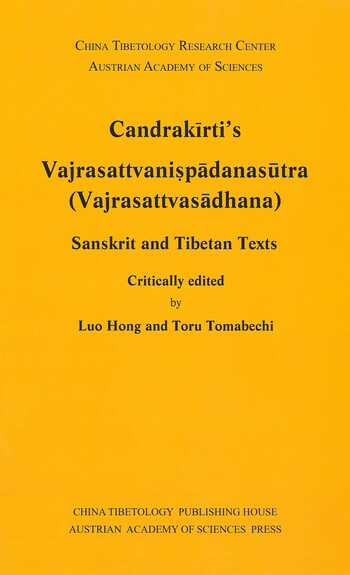Hong Luo, Toru Tomabechi (eds.), 2010
Candrakīrti`s Vajrasattvaniṣpādanasūtra (Vajrasattvasadhāna): Sanskrit and Tibetan Texts. (STTAR 6.) Beijing, Vienna: China Tibetology Publishing House and Austrian Academy of Sciences Press, 2010 (order online). (100 S.)
This is the first critical edition of the Sanskrit text together with the Tibetan translation of the Vajrasattvaniṣpādanasūtra (VS) ascribed to the Buddhist tantristic author Candrakīrti. The text deals with the process of meditational realization of the state of the primordial Buddha Vajrasattva, and belongs to the corpus of the so-called Ārya School of the Guhyasamāja exegesis. The text expounds the Steps of Generation (utpattikrama) of the Ārya School, essentially as a symbolic process of the birth of deities from the sexo-yogic union between the practioner and his yogic consort. The Sanskrit edition is based on copies of two new manuscripts from Tibet (A, ca second half of the 12th cent.; B, 1301? CE) and one photographed by Rāhula Sāṅkṛtyāyana at Ṅor Monastery (G, ca 12th – 13th cent.). The edition of the Tibetan translation is based on the four versions of Derge, Narthang, Peking, and the Golden Manuscript. Two additional testimonies are provided in the appendices: a collection of passages of the VS quoted in an anonymous text also photographed at Ṅor, and an edition of the Mantroddhāra on the basis of the same manuscript as G. A synoptic analysis of the VS, as well as notes on related texts, descriptions of the manuscripts, a map of the thirty-two deity maňḍala are provided in the introduction.
